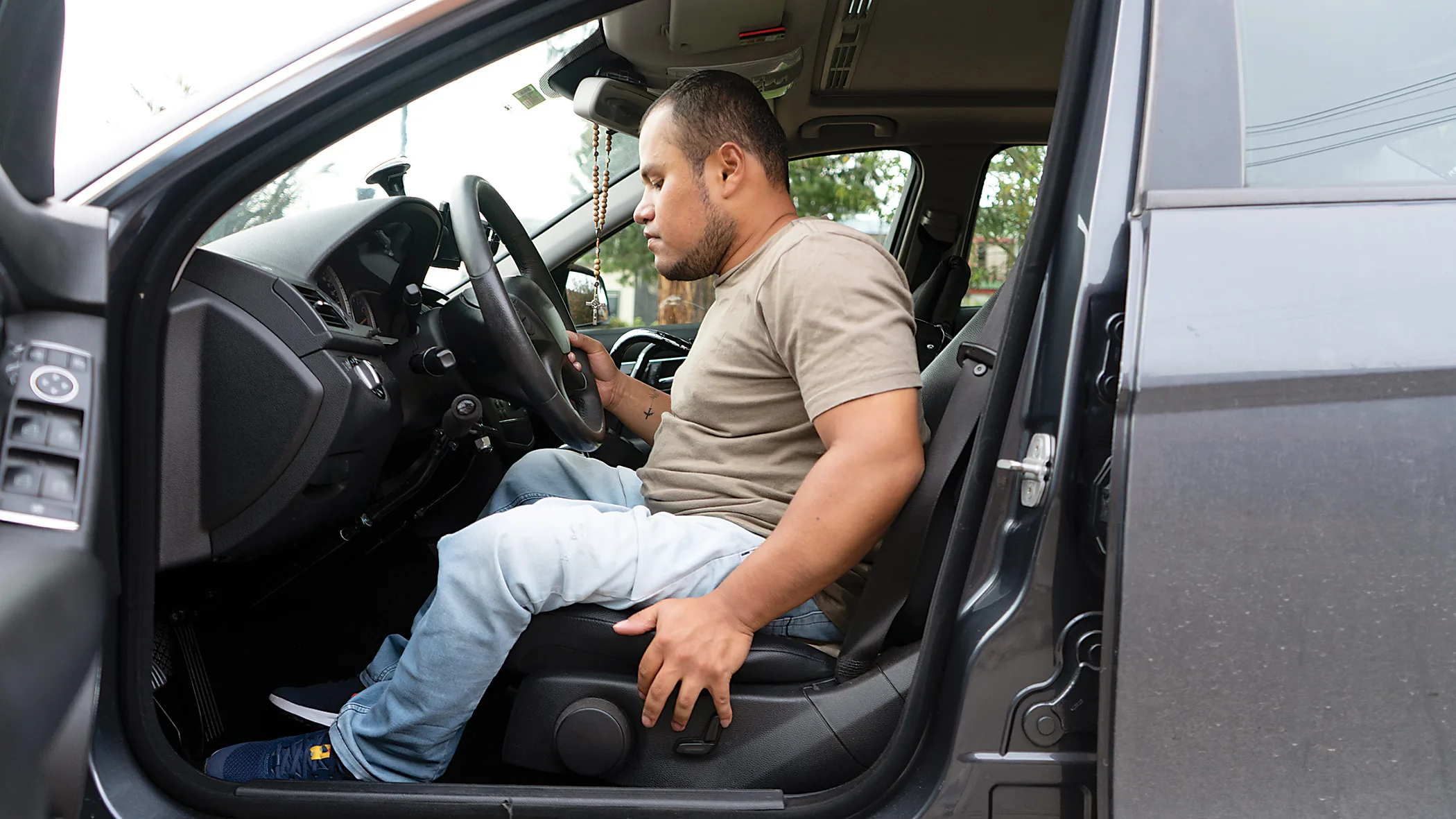
By Angela Gartner
With access to support and understanding, getting behind the wheel can be a pathway to independence, but also a serious responsibility. For people with special needs, obtaining a driver’s license entails a process similar to many other drivers. Each family has to determine the best way to proceed based on their situation. Here are some ways to get started.
Are you Ready to Drive?
People of all abilities have different reasons for wanting to drive. For anyone interested in driving, the first step for that person is to have a formal assessment of the skills needed to drive to determine if they have the capacity to learn the skill and to help make recommendations for moving forward.
A certified driver rehabilitation specialist can provide a clinical assessment and on-the-road assessment of driving skills as that would be appropriate for people with special needs. Driver training with a driving instructor including for persons with disabilities may also be an appropriate option.
According to The Association for Driver Rehabilitation Specialists (ADED, aded.net), a clinical assessment covers skills necessary to operate a motor vehicle (vision, reaction time, cognition and physical skills) as well as skills necessary for safe driving (knowledge of road rules and regulations, safety awareness, judgment and decision-making). The road test is both observation and instructional, depending on the person’s needs. If indicated, a certified driver rehabilitation specialist will also introduce any adapted driving equipment, such as hand controls.
“Driving is a very complex learning process with not all persons equipped to be able to do this. The specialized assessment process allows for individualized testing to determine appropriate recommendations regarding the pursuit of learning to drive,” says Julie Dominik, a certified driver rehabilitation specialist at the Cleveland Clinic and a licensed driver instructor including for persons with disabilities in Ohio. She gave a presentation called “Driving with a Disability” during the Transition Bootcamp (livespecial.com/video-library) from
LiveSpecial.com, along with organizations that serve the special needs community.
Safety is the main priority related to being a driver while the learning process itself is rather complex. Having a disability can affect the learning to drive process. ADED provides a series of fact sheets on disabilities and driving to help understand what might impact driving skills.
Considerations include vision and eye movements, auditory processing, executive functioning, attention, medication side effects, physical skills to name just some of the issues taken into account when evaluating if that person is ready to drive.
“Driving requires three main things, eyes, brain, and body. The eyes take in most of the important information, the brain has to process what we see quickly/efficiently/accurately to tell our body how to respond,” Dominik says. “Hearing/auditory attention also plays a significant role in the learning to drive process.”
How someone handles daily tasks can be important when evaluating driver readiness.
“There is a hierarchy of skills development to consider when preparing for a person to learn how to drive starting with self-care (i.e. showering on own, grooming, getting oneself up in the morning) and being able to do these tasks on one’s own and needing minimal reminders for the same. The next consideration is how many skills can a person do to take care of their environment (i.e. cleaning their space, getting something to eat, doing laundry, etc.), which is a definite precursor to taking on the next responsibility which is accessing the community on one’s own which can be working, using public transportation, doing shopping alone. Learning to drive a vehicle and becoming a licensed driver is part of this last group of tasks with the previous levels of independence helping one to achieve readiness for learning to drive to be considered.”
To help drivers and their families, assess and understand goals towards independence, they can try this online tool;
drivefocus.com/occupational-therapy-tools.
Whether it’s a teenager over age 15 and half, a young adult or an adult with special needs, that person can talk to their doctor to get a referral for a driver rehabilitation assessment to start the process. Regarding costs, check to see if insurance covers the clinical assessment which is possible if physician referral and disability diagnosis is provided. However, the Ohio approved driver’s training course, driver training, and adaptive equipment for driving/vehicle needs are not covered by health insurance.
The State of Ohio Laws
In Ohio, drivers 15 years and six months are able to gain their temporary permit by taking a multi-choice test on a computer in a Bureau of Motor Vehicles exam station. The test can be done in text or audio. Drivers also have to complete a vision test.
According to the Ohio Traffic Safety Office, “beginning on Sept. 30, 2025, Ohioans ages 18, 19 and 20 will be required to take an Ohio-approved driver training course (includes 24 hours of online or classroom instruction and 8 hours of behind the wheel formal driver training) and complete 50 hours of driving practice supervised by a licensed adult to receive a driver license.”
A certified driver rehabilitation specialist and your doctor can help drivers with special needs determine appropriate recommendations moving forward. However, the driver and the family are responsible for gathering the necessary paperwork, scheduling and applications to take the driving tests. Opportunities to retake the temporary permit test and license exam are available while success is never guaranteed. Additional hours of driver training and supervised practice may be needed.
“They need a lot of support and a lot of encouragement if it is appropriate for them to pursue the learning to drive process,” Dominik says. “I’ve had the best success with people who get out and drive with supervision almost on a daily basis. They need that consistent practice to improve competency and confidence.”
Adaptive Vehicles
Drivers might need assistance outside the traditional vehicle controls. Driving aids such as transfer seats, steering assist devices, left-foot accelerators, and hand controls can be prescribed and installed.
The equipment for these adapted vehicles should be handled by a professional through a consultation from a certified driver rehabilitation specialist who would determine the appropriate equipment and provide prescription detailing the same.
Prescriptions for adapted driving equipment and vehicle modifications are shared with the mobility equipment dealer and together, with the certified driver rehabilitation specialist, they work to achieve what’s needed for the driver, according to ADED. However, along with the cost of a vehicle, adaptive equipment can be costly.
According to the U.S. Department of Transportation from the National Highway Traffic Safety Administration, a possible cost of a new vehicle modified with adaptive equipment could be $20,000 to $80,000. Some adaptive equipment can cost as little as $50, but more complex features can range from $1,000 and up. At website
themobilityresource.com, it provides a variety of Ohio resource ideas for possible funding such as grants. Also check manufacturer rebates that might apply to your vehicle. The Association for Driver Rehabilitation Specialists might also have ideas how to help.
Certified Driver Rehabilitation Specialist (CDR) in Northeast Ohio
Make sure to ask for a certified driver rehabilitation specialist at these locations:
- Cleveland Clinic clevelandclinic.org
- Heights Driving School heightsdriving.com
- MetroHealth rehabilitation.metrohealth.org/outpatient/therapies
More resources:
Association for Driver Rehabilitation Specialists
Drive Focus Assessment Online Tool
drivefocus.com/occupational-therapy-tools
Ohio BMV
Ohio Traffic Safety Office
ohio.gov/programs/ohio-driver-training
Opportunities for Ohioans with Disabilities,
Julie Dominik contributed to this article.

